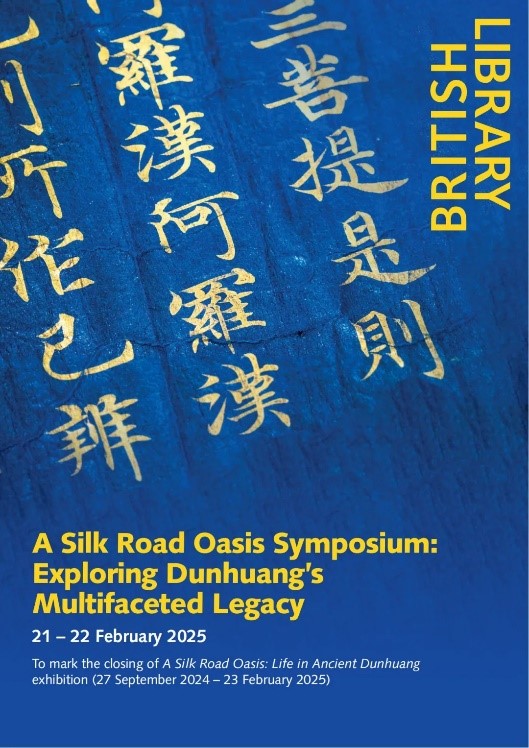
“A Silk Road Oasis Symposium: Exploring Dunhuang’s Multifaceted Legacy” was held at the British Library and live-streamed on February 21–22. The event brought together leading researchers to share the latest insights into the history, culture and legacy of Dunhuang.
The sessions on February 21 opened with “The Thousand Buddhas: Sensing Religion at Dunhuang,” exploring the phenomenology of the Thousand Buddhas motif. Panel discussions covered a range of topics, including new archaeological insights on Dunhuang during the Han dynasty (202 BCE–220 CE), research on Dunhuang’s geographical documents, and the Buddhist slave trade. These discussions spanned multiple disciplines, including archaeology, history and religion, highlighting the breadth and depth of Dunhuang studies.
On February 22, the focus shifted to “Everyday and Everydayness in Dunhuang”, offering fresh perspectives on the daily lives of local residents. Topics included the British Museum’s research on textiles and dyes from Dunhuang, the significance of digitizing Dunhuang manuscripts, studies on the ancient languages of Xinjiang, and analyses of Tocharian paper documents. The discussions extended to the Dunhuang Library Cave, traditional costumes and music, and curatorial approaches for Dunhuang-themed exhibitions, providing a comprehensive look into Dunhuang’s rich cultural legacy.
The symposium served as the closing event for the British Library’s exhibition A Silk Road Oasis: Life in Ancient Dunhuang, which ran from September 27, 2024 to February 23, 2025. Through diverse artifacts unearthed from the Mogao Library Cave, the exhibition transported visitors back a thousand years to explore the stories of ancient artists, religious scribes, merchants, fortune-tellers, diplomats, Buddhist monks and nuns who lived, traveled, worked and worshipped in the Dunhuang oasis.
Sources: The British Library, Yangpu District Bureau of Culture and Tourism (Shanghai) 